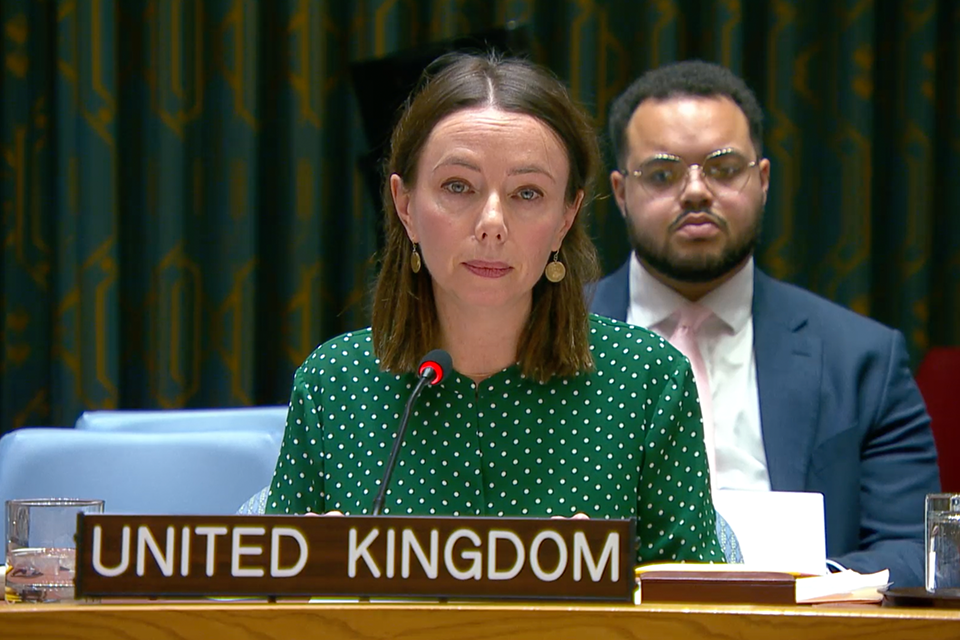- Details
- East Africa
- 216
Statement by Jennifer MacNaughtan, UK Minister Counsellor, at the Security Council meeting on the Democratic Republic of the Congo.
I will make three points:
First, the United Kingdom welcomes the signing last week of the Washington Accords and the signing of the Framework Agreement in Doha last month. We commend the leadership of the United States, Qatar and of the African Union in driving these efforts. We call on the parties to implement the agreements and to honour their commitments in full.
Second, we are deeply concerned that, despite progress on the political tracks, violence has increased in South Kivu. We condemn the recent M23 offensive and takeover of Uvira, with the support of the Rwandan Defence Forces.
The UK urges an immediate cessation of hostilities and for all parties to fully comply with Security Council resolution 2773. There can be no military solution to this conflict. This escalation in fighting has worsened an already dire humanitarian situation, which will only further deteriorate as refugees flee across the border into Burundi following M23’s latest offensives.
We are greatly concerned by continued reports of human rights violations and abuses, including conflict-related sexual violence – on which we have heard tragic testimony from Médecins Sans Frontières today – perpetrated by the parties to the conflict and, in particular, by M23 and Wazalendo.
The United Kingdom calls on the parties to fully comply with their obligations under international humanitarian law, including ensuring the protection of civilians.
Third, the United Kingdom reiterates our full support for MONUSCO. The mission continues to play a vital role, especially in supporting the protection of civilians. We also express our support for a MONUSCO role in ceasefire monitoring, to embed the progress towards peace and security made through the political process.
It is critical that MONUSCO is able to deliver its mandate without hindrance. We again call for M23 to lift all obstructions to the mission’s operations. We urge all parties to ensure MONUSCO’s freedom of movement, in compliance with the decisions of this Council.
The UK calls on all parties to now seize the opportunity to deliver the peace, prosperity and security that the people of eastern DRC so deserve.






